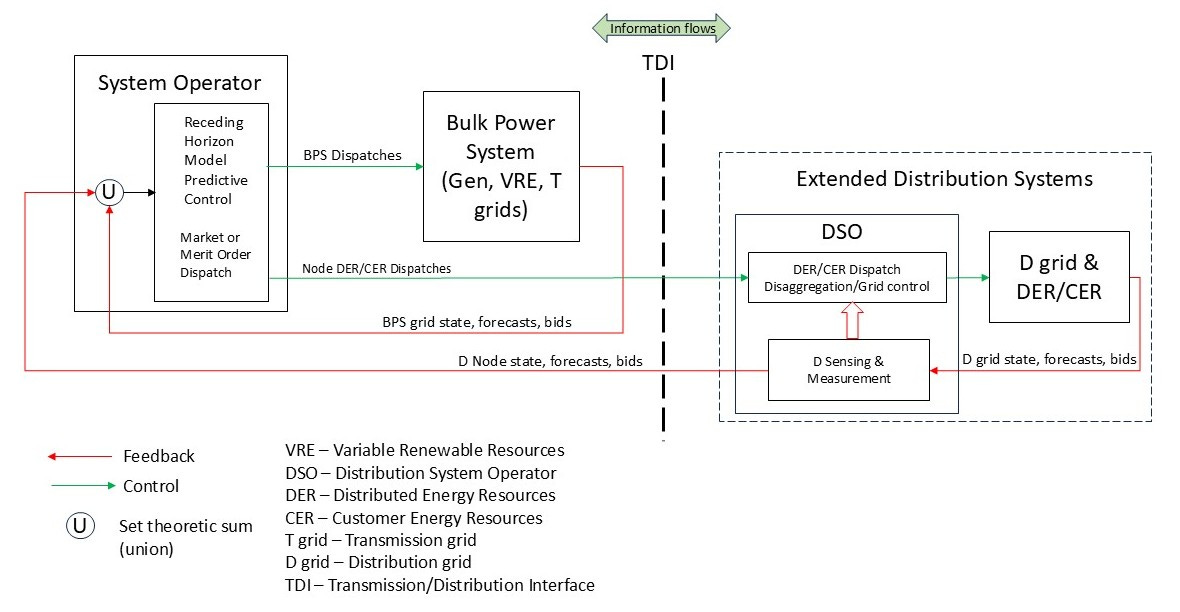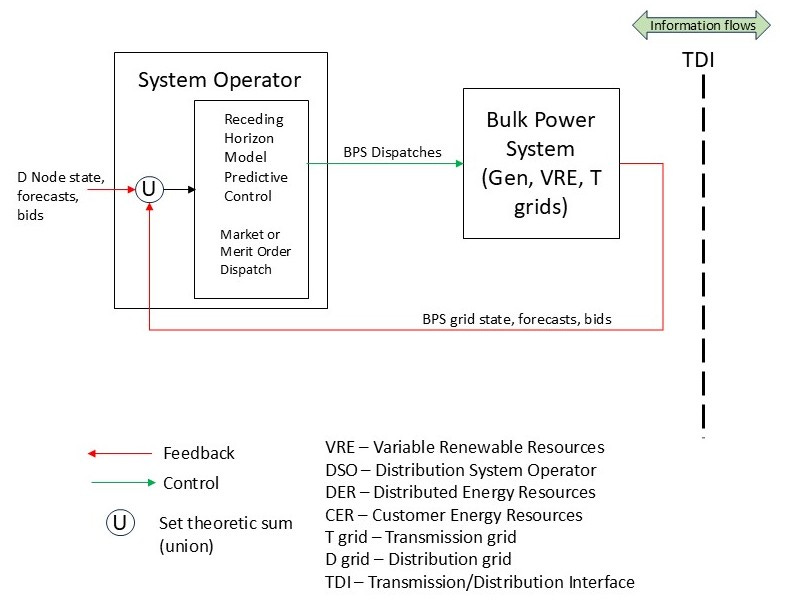DER Integration Is Not An IT Problem - It Is A Distributed Control Problem
Use control engineering principles to get your DSO models right.
The bifurcation of grid resources into traditional Bulk Power System (BPS) and distribution-connected resources, along with the use of Variable Renewable Energy (VRE) resources (mainly wind and solar) has created deep structural and parametric changes in electric power systems. In other words, the grid is morphing into something we cannot control well with what we have. Information Technology and software engineering do not have the tools sufficient to deal with this transformation. The core problems are primarily issues of structure (architecture) and control, and the move toward Distribution System Operators (DSOs) is a partial (but only partial) recognition of this. Unfortunately, present DSO efforts are still heavily laden with IT thinking instead of control engineering principles. This is why we see proposals for giant centralized databases and “platforms” to be located in exactly the wrong places in the grid.
Now, I am sure the electricity market economists are frantically waving their hands to say “But, but, wait, markets solve all the problems, we don’t need controls.” First let me point out that in the Grid Architecture discipline, we use the hybrid terminology market-control because these two are much closer to each other in terms of methods and complementarity than their proponents might have you believe. Second, the two trends I mentioned in the first paragraph are causing shifts in how market-controls must work because electricity markets are not able to handle low-to-zero marginal cost resources. In addition, increased speed of grid dynamics, combined with the sheer scale of planned distribution-connected resources challenge the ability of markets to respond in a timely fashion. You can see more about how the US 20th Century Bulk Power System was controlled here, and how the US BPS electricity markets are structured and integrated with controls here.
With all that as preamble, let’s use control engineering thinking to look at the currently hot topic of Distribution System Operators. The DSO issue arose because of questions about how electricity market-controls could handle the introduction of vast amounts of Distributed Energy Resources. The IT approach has failed to recognize the inherent large scale grid and control structure issues and so has resulted in messy ad hoc arrangements, some of which have unfortunately been codified into regulation in the US.
In the diagram below, the power system is depicted with a good bit of abstraction. We must always remember that the abstraction deliberately hides some details (like the details you can find at the links above), so be wary of making the reification mistake. With that caution in mind, have a look at the power system-with-DSO model in the figure below. It shows only one distribution system but of course, in practice there would be many.
We are going to dissect this diagram to illuminate the control structure. Let’s start by setting aside details of the electrical infrastructure for now and consider the major operational elements:
In this diagram there are three feedback control systems, arranged in a specific structural form (more about that later). The first control loop (SO-BPS) involves the System Operator (SO) and the bulk power system:
The Bulk Power System has more than a dozen control functions (see the links above) but we are going to focus on what most people think about in connection with DSOs: resource dispatch. Notice that I show the system operator control function for this as Receding Horizon/Model Predictive Control, regardless of whether there is a real time market or not. Grid operators and especially electricity market economists do not think of this function as being that, but it is.1 We can clearly see the feedback control structure for this portion of the grid from this depiction. Here the demand from distribution appears as reference input to the control loop, which makes sense when you realize that the grid was originally developed as a load following system.
The second control loop (SO-DSO) involves the system operator and a DSO:
In this loop, the DSO provides consolidated views of its distribution system to the SO, and acts to disaggregate bulk dispatches from the SO to the DSO. In this manner, the SO sees the distribution system as a consolidated load/resource at the TDI and does not need detailed information from inside the distribution grid.2 There is one of these control structures for each distribution system TDI interconnection point. Note that power flows across the TDI may occur in either direction (see the first figure).
The third control loop (DSO-D grid) involves the DSO and the distribution system:
In the layered decomposition (“Laminar”) approach, the DSO acts as controller/coordinator for the resources of the distribution system with input from the SO (note that DSO is a set of functions or role, assigned to the distribution system operator). The DSO manages local and bulk resources to ensure electricity delivery in the distribution service area. It may also manage resources provided to bulk power system from the extended distribution system.
These models are simplified to show macro structure and so do not illustrate various functions that are necessary to grid operation but don’t change the essential forms shown here. By understanding these major structures in terms of control and coordination, rather than via IT, we can reason about the integration and use of DSOs not just statically but also in terms of dynamic behavior.
Remarks
TDI is a boundary, not a layer or zone or platform.
This model is essentially a “Total DSO” model.
This is a distributed control system model. Multiple independent controls cooperate to solve a common problem.
This model uses Laminar (layered decomposition) structure, although that may not be immediately obvious from the way it is drawn.3
This structure provides for well-defined interfaces and clear role/function assignments, without any need for intermediate entities or platforms.
This structure and model enables data/information scalability.
I don’t think the electricity market methods were formally derived from model predictive control, but the electricity market economists arrived at the same solution as the chemical processing industries did years earlier.
The SO and DSO continually negotiate the flow of power, services, and value across the TDI before the SO issues dispatch orders, so the DSO is not a “control slave” to the SO. Think of the dispatch orders as more like requests to be carried out by the DSO, as per agreement between them. The model easily accommodates distributed electricity markets to facilitate the agreements and exchanges - this diagram does not show the detail of how that works. That is a subject for another day and another essay on Laminar coordination.
Showing how this is consonant with layered decomposition is left as an exercise for the student.






